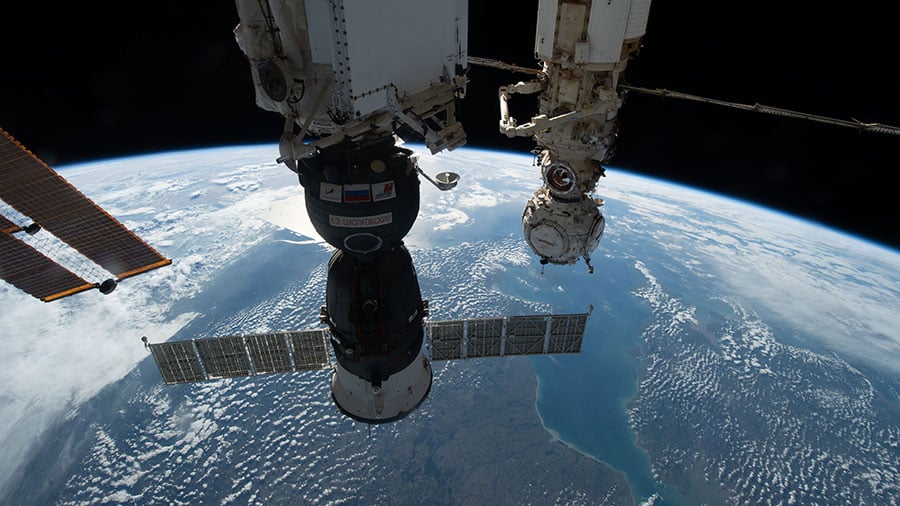There is an ongoing incident at the International Space Station involving a coolant leak from a docked Soyuz MS-22 crew ship. Just as Roscosmos cosmonauts Sergey Propokyev and Dmitri Petelin were getting ready to do a spacewalk to relocate a radiator, ground teams in Moscow noticed the leak. The spacewalk was cancelled immediately.
It appears that one of two external radiator coolant systems on the capsule is outgassing ammonia. So far, there is no threat to any of the crew members of Expedition 68 on board the ISS.
However, the Soyuz was to be the ride home for two Russian cosmonauts and NASA astronaut Frank Rubio. Whether or not it can be used for the return trip is still unknown. That may leave the three men awaiting the arrival of another Soyuz capsule since the Dragon capsule also currently attached to the station doesn't have enough room for more than four riders. The Soyuz crew ships are the workhorse spacecraft for delivery of cosmonauts and astronauts to and from the space station.
More About the Leak
Roscosmos first noticed the leak on the Soyuz crew ship at 7:45 p.m. EDT on December 14th. That's when multiple sensors showed low readings from the coolant loop. The cosmonauts delayed and ultimately cancelled their walk, in large part to avoid contact with the leaking coolant. The Moscow ground team immediately also cancelled a December 21st spacewalk. The U.S. team is going ahead with a planned spacewalk on December 19th.
The cause of the leak is still under investigation. Ground crews are still assessing whether and how much damage the outgassing ammonia has done to the exterior of the space station as well as the spacecraft itself. In particular, they'll want to know if there's been any effect on solar panels, radiators, insulating blankets, and other parts of the station.
Roscosmos is monitoring Soyuz spacecraft temperatures, which are still within acceptable limits. NASA and the Russian space agency are coordinating imaging and video of the affected spacecraft and planning further inspections to evaluate the location of the leak and possibly what caused it to happen. Plans for an additional inspection of the Soyuz exterior using the station's Canadarm2 robotic arm are underway. Russians are partners on the International Space Station through 2024 along with the NASA, the Japanese Aerospace Exploration Agency, the European Space Agency, and the Canadian Space Agency.
For More Information
Follow updates about this situation on Twitter at @space_station and the Space Station blog.
 Universe Today
Universe Today

